2026 Cobble Beach Classics
1906 Russel Model B – Hugo Vermeulen – Oshawa, Ontario
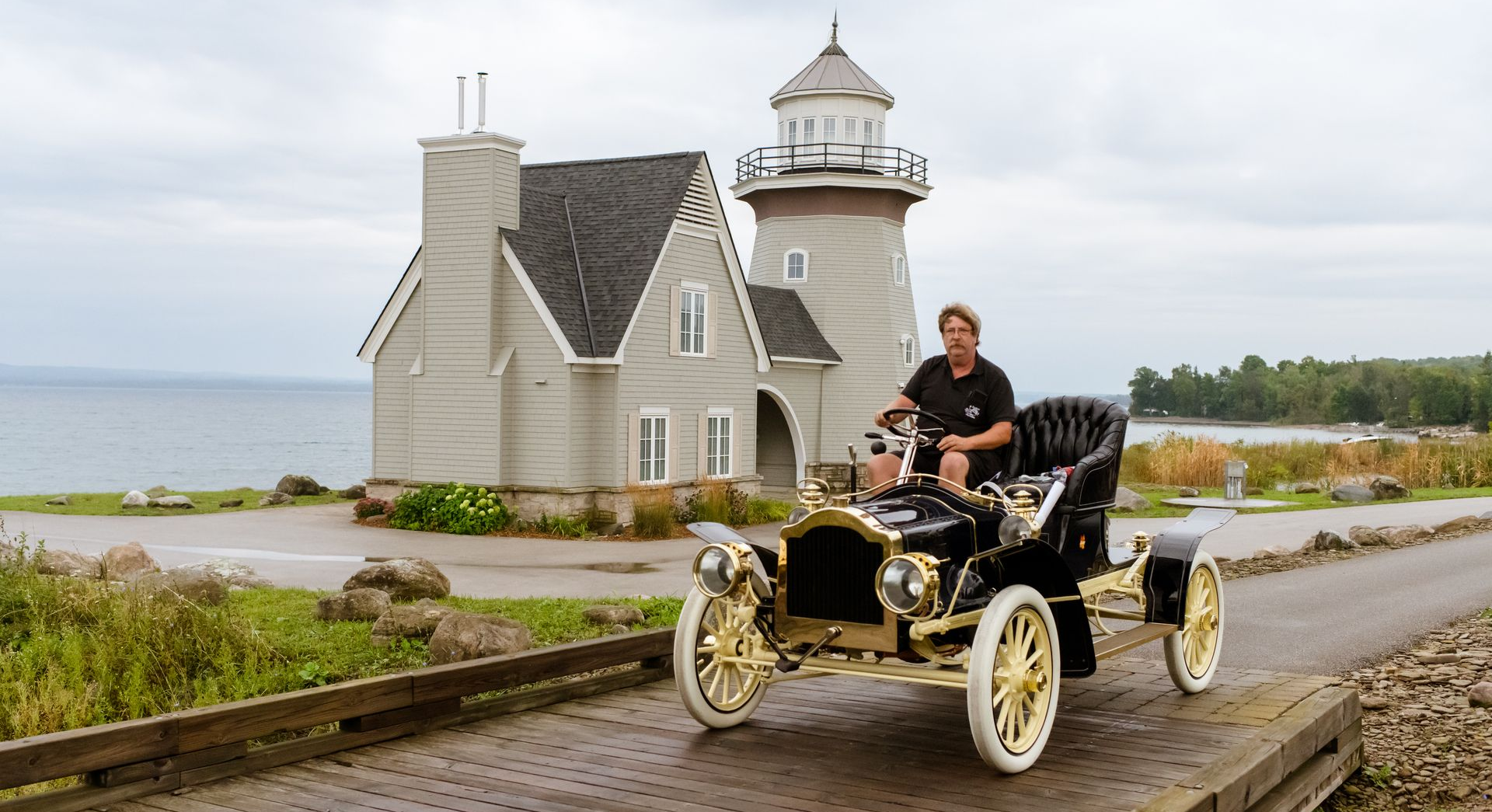
The Russell Motor Car Company was an automobile manufacturer in Toronto, Canada, that produced cars from 1904 to 1916. The Russell Motor Car Company is considered to be Canada’s first successfully produced automobile. In 1903, weakness in the bicycle market prompted Canada Cycle and Motor Co. (C.C.M.), a bicycle manufacturer, to acquire Canadian Motors Ltd., a failed automobile manufacturer. Tommy Russell, C.C.M.’s new general manager, saw an opportunity to expand his company’s product line. From 1903 to 1905, C.C.M.’s new automobile division, named Russell Motor Car Company, with Russell serving as president, began manufacturing two-passenger runabouts. In 1905, the company produced its first “Model A” car, with a two-cylinder gasoline engine. During 1906, Russell phased out the Model A (priced at $1,300) and introduced two new models: the Model B and the Model C. CCM aimed to build 140 cars for 1906, mostly Model Bs. It is believed that actual production was near that number. This specific Russell is the oldest surviving Russell and was discovered in Quebec in the seventies.
Do you want to win VIP tickets to the Cobble Beach Concours d’Elegance?
We’re giving away two VIP tickets to this year’s show! Don’t miss out –
click here to enter our exclusive giveaway!
1924 Delage GL Skiff Toredo by Labourdette
– Ted & Mary Stahl – Chesterfield, Michigan

Many connoisseurs of European luxury cars regard the Delage GL, or “Grand Luxe,” as one of the finest Delage classes ever designed. Conceived in the early 1920s as a competitor to Hispano-Suiza, Farman, and Rolls-Royce, the GL was the brainchild of Maurice Sainturat, a gifted engineer formerly of the Hotchkiss Company. The Grand Luxe is a marvel not only in its mechanical specifications, but also in its aesthetics. Jean-Henri Labourdette was a third-generation Labourdette at the helm of the family coachworks. Early competition events and regulations led to the development of the “torpedo,” a body style distinguished by the integration of the passenger compartment with the hood, forming a continuous line from the radiator to the tail.
Some 35 years ago, Paul Grist discovered this car owned by Sir Francis Samuelson. It was being used as a tow vehicle! The original body was largely complete and intact. It had received a restoration and was then featured in the film "Chariots of Fire." It appeared at the Pebble Beach Concours d'Elegance in 2005 and 2008, winning the French Cup and class award, and in 2007, it won the People’s Choice award at the Kirkland Concours d'Elegance.
Do you want to win VIP tickets to the Cobble Beach Concours d’Elegance?
We’re giving away two VIP tickets to this year’s show! Don’t miss out –
click here to enter our exclusive giveaway!
1927 Duesenberg Model X
–
Auburn Cord Duesenberg Automobile Museum – Auburn, Indiana
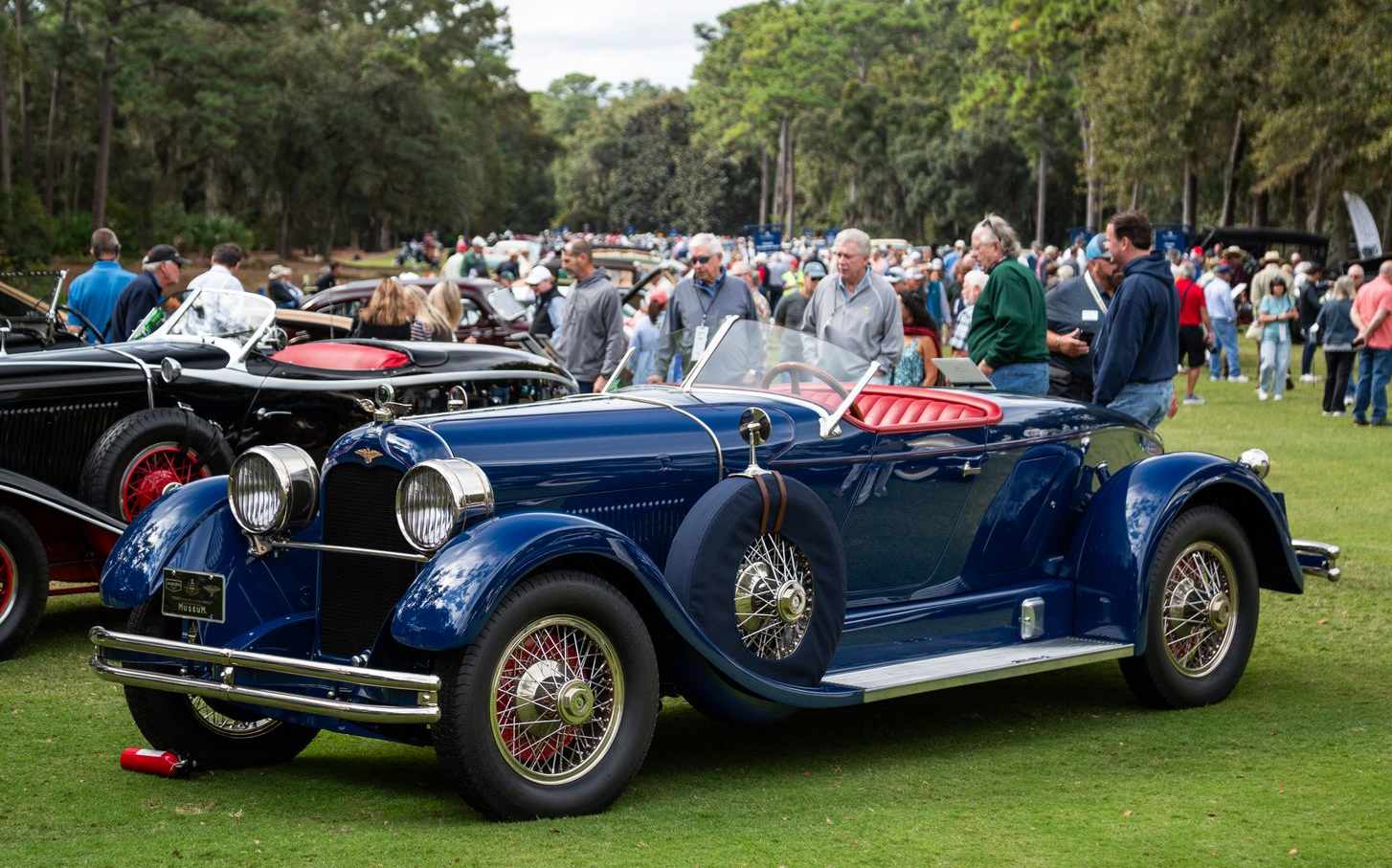
This Duesenberg Model X speedster, a one-off creation made for the auto show circuit, is arguably one of the most significant and influential motorcars built in the United States. Strictly a show car, the sleek speedster lacks common amenities such as windshield wipers, a convertible top, and side windows. It is the styling prototype for the Auburn speedster, which appeared a year later. Its design, both aesthetically and mechanically, was the seed from which enthusiasm grew for sleek, high-performance automobiles, launching America’s passion for personal sports cars. This car was originally purchased by Chicago magnate Arnold Kirkeby, who likely saw it at the 1928 Chicago Auto Show. Over the decades, this Duesenberg fell into disrepair. However, under the guidance of its donor (Rita and Peter Heydon of Ann Arbor, Michigan), the Duesenberg was returned to its former glory during a four-year restoration.
Do you want to win VIP tickets to the Cobble Beach Concours d’Elegance?
We’re giving away two VIP tickets to this year’s show! Don’t miss out –
click here to enter our exclusive giveaway!
19XX Mercedes-Benz 300SL Gullwing – Private Collection – ON

The success story continued in 1954 with the 300 SL “Gullwing”, a coupe that turned the heads of sports car enthusiasts with its unique design and extraordinary power. The roots of the car’s development lay in the USA: “What we need over here is a great Mercedes-Benz sports car,” US importer Maximilian Hoffman is reported to have said. In September 1953, he convinced the Board of Management at Daimler-Benz to build a series version of the successful 300 SL racing sports car. Incredibly, just five months later in February 1954, the Mercedes-Benz 300 SL (W 198) made its sensational debut at the International Motor Sports Show in New York. The new sports car exuded elegance and innovation in equal measure. It was the world’s first four-stroke production passenger car to be equipped with output- and efficiency-enhancing direct fuel injection. Breath-taking engine output of 215 hp (158 kW) provided a top speed of 250 km/h, depending on final drive ratio. That made the 300 SL the fastest production car of its day.
Looking to expand upon his success with the Gullwing coupe, United States Mercedes-Benz importer Max Hoffman thought that a convertible version of the 300 SL would also sell quite well, and the 300 SL Roadster was introduced in 1957. Of course, as the 300 SL would lose its top, engineers had to reinforce and modify the space-frame chassis to fit conventionally hinged doors. Through lowering the height of the chassis, this simultaneously allowed for greater ease of entry. Cosmetic changes were minor and included a smaller grille opening and dual chrome strips along the side sills, giving the car a more streamlined and glamorous look. At the rear, the spare tire was repositioned below the trunk floor, necessitating a smaller fuel tank but also maintaining reasonable luggage space. These revisions to the roadster added some 250 lbs. to the total weight of the car, mostly due to the convertible top.
Looking to keep the speed and performance of the closed 300 SL for the new roadster despite its gain in weight, Mercedes-Benz fitted the more sporting NSL engine of the coupe to all roadsters as standard equipment. This made the roadster capable of top speeds that ranged from 133 to 155 mph, depending on the final drive ratio specified. However, the stunning performance and design of the 300 SL Roadster did not come cheap, at a list price of $11,000; but……it was worth every penny!
Do you want to win VIP tickets to the Cobble Beach Concours d’Elegance?
We’re giving away two VIP tickets to this year’s show! Don’t miss out –
click here to enter our exclusive giveaway!
1961 Chevrolet Mako Shark I Corvette – GM Heritage Center – Michigan
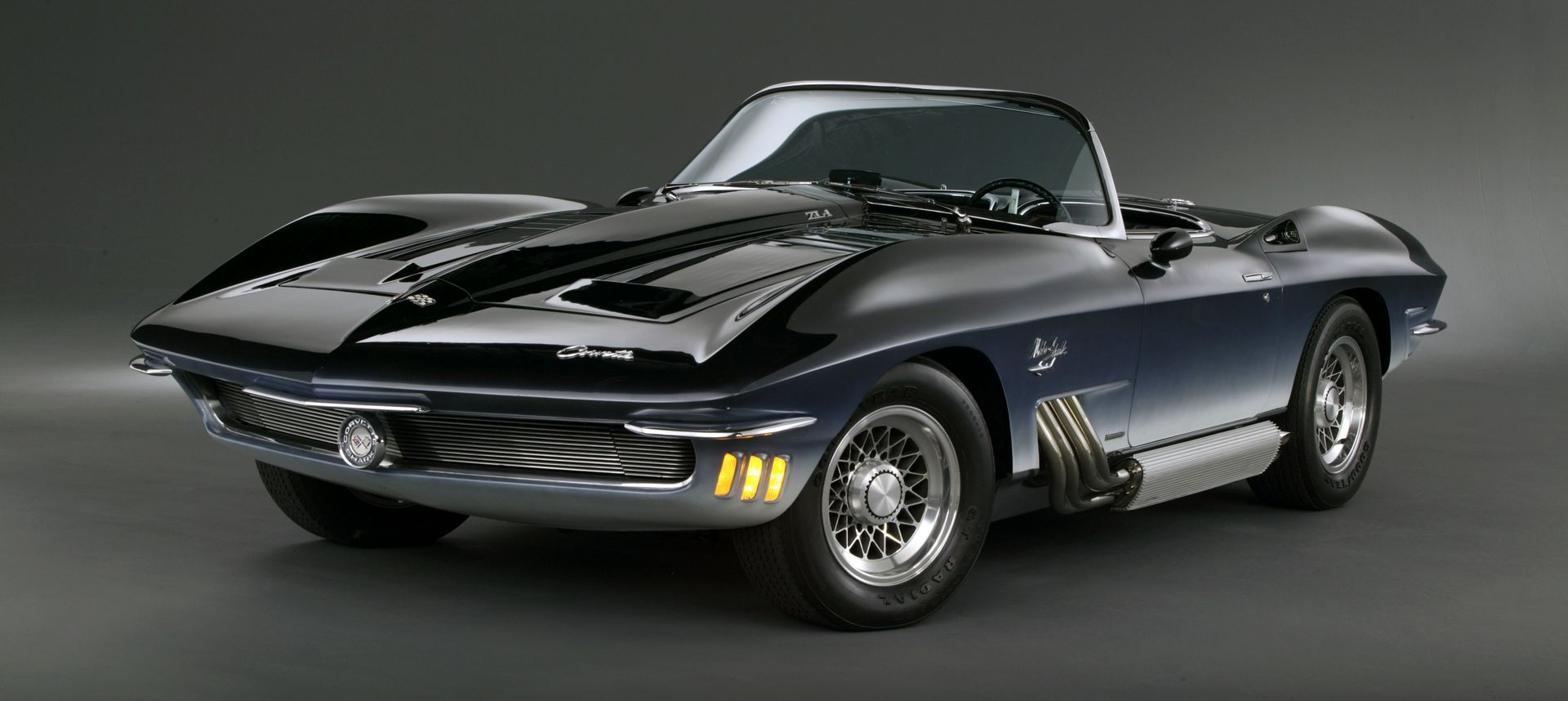
The Mako Shark I, originally known as the XP-755 Corvette Shark, was designed to forecast the future appearance of the production Corvette. Its basic lines were inspired by a mako shark caught off the coast of Florida by then vice president of GM Design, William L. “Bill” Mitchell. It made its debut at the New York Auto Show in 1961.
Working in the clandestine Studio X, designer Larry Shinoda adapted the lines of the forthcoming C2 Corvette onto a first-generation chassis, exaggerating the theme and accentuating its front fascia with a protruding shark-like mouth. Its side-mounted exhaust pipes were fashioned as a set of gills. Mako Shark I was finished in a varicolored paint scheme based on an iridescent blue upper surface that blends into a white side and lower body, like the natural coloring of the shark Bill Mitchell landed. It originally featured an aircraft-style double-bubble plexiglass roof with a chromed periscope mirror.
Several experimental engines have powered the Mako Shark I, including a supercharged 327 cubic inch V8 with four side-draft carburetors, a fuel injected 327 V8 and a V8 with two four-barrel carburetors. Its last and present engine is the all-aluminum 427 cubic inch Chevrolet ZL-1 V8. Equipped with a single four-barrel carburetor, it produces upwards of 425 horsepower.
In addition to the mechanical updates, this concept also had sustained several aesthetic changes during its show life, including the elimination of the double-bubble canopy, new interior trim and a fresh, darker paint scheme that coordinated with the Mako Shark II concept that bowed for 1965. Mako Shark I traveled extensively during its active show life in the 1960s. Today, it is one of several significant Corvette concepts in the GM Heritage Collection.
Do you want to win VIP tickets to the Cobble Beach Concours d’Elegance?
We’re giving away two VIP tickets to this year’s show! Don’t miss out –
click here to enter our exclusive giveaway!
1971 Plymouth Cuda
– Sandro Brocca – King City, Ontario
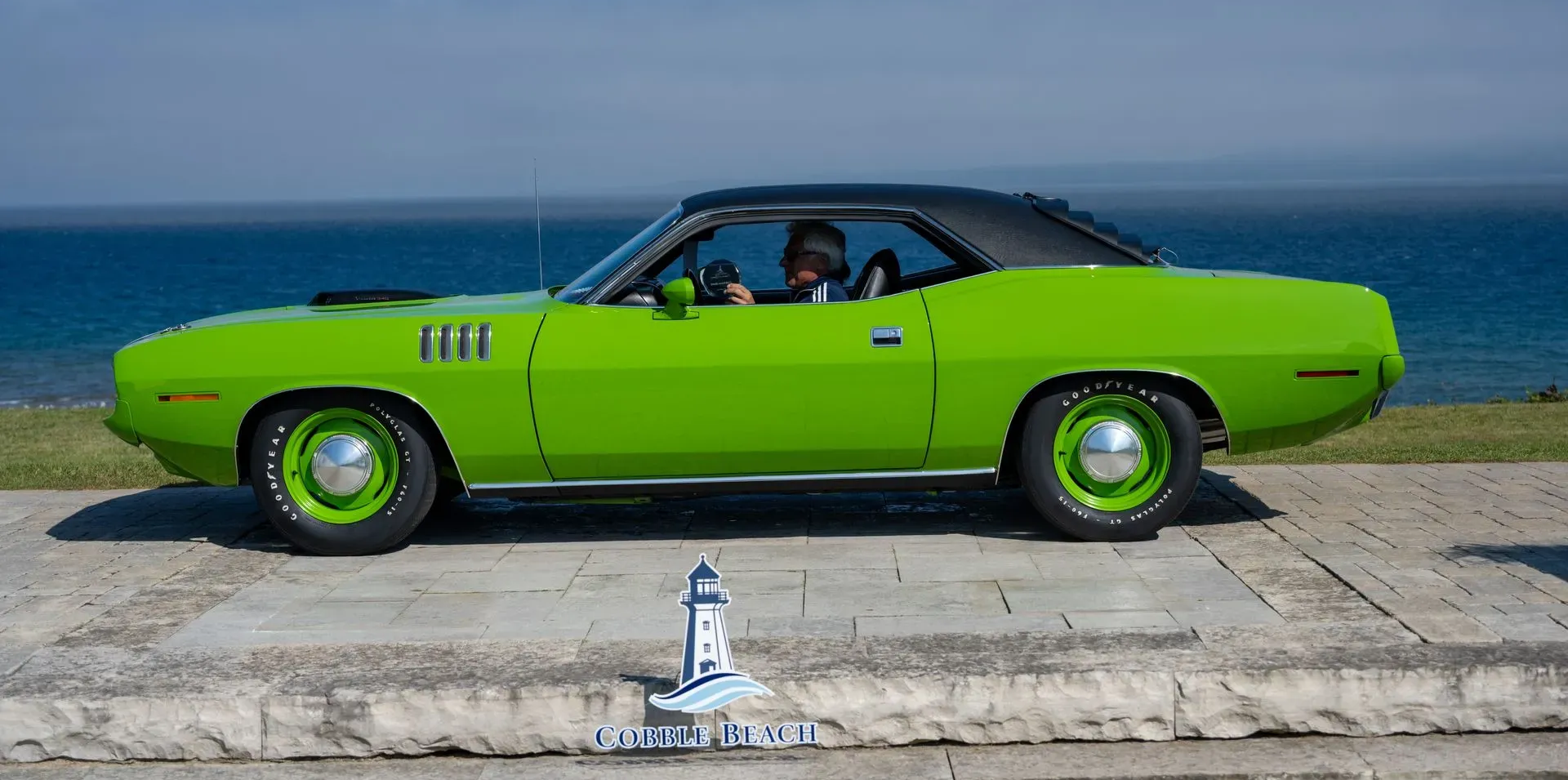
This car was definitely one of the first 1971 340 Cuda’s to roll onto the dealership floor since it was built in the first week of production. The sassy grass green definitely was a head turner.
This car has been through a full concours level restoration by Mauro Brocca - a well-known restorer of high performance Chrysler vehicles. Many different processes are used to duplicate the quality and finishes of the assembly line. The 1971 340 Cuda has become a very desirable car over the years and this one has all the options to make it stand out from the rest.
Do you want to win VIP tickets to the Cobble Beach Concours d’Elegance?
We’re giving away two VIP tickets to this year’s show! Don’t miss out –
click here to enter our exclusive giveaway!
19XX Lamborghini Miura – XXXX – XXX, Ontario
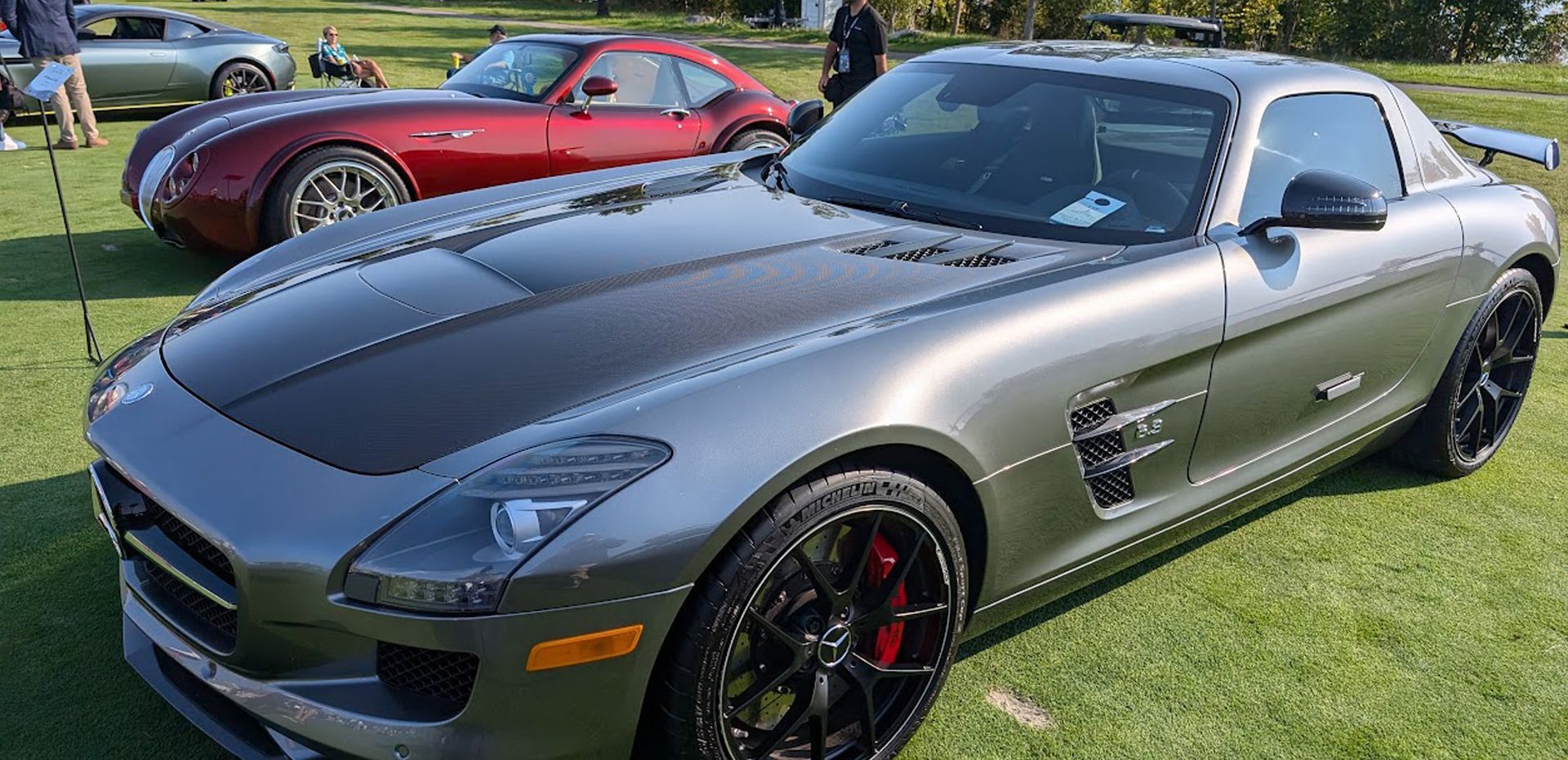
XXXX
Do you want to win VIP tickets to the Cobble Beach Concours d’Elegance?
We’re giving away two VIP tickets to this year’s show! Don’t miss out –
click here to enter our exclusive giveaway!
2003 BMW Alpina Z8 Roadster – Lauren & David Mendelson – Troy, MI

XXXXX



